
EASL Congress 2023
21-24 June Vienna

|
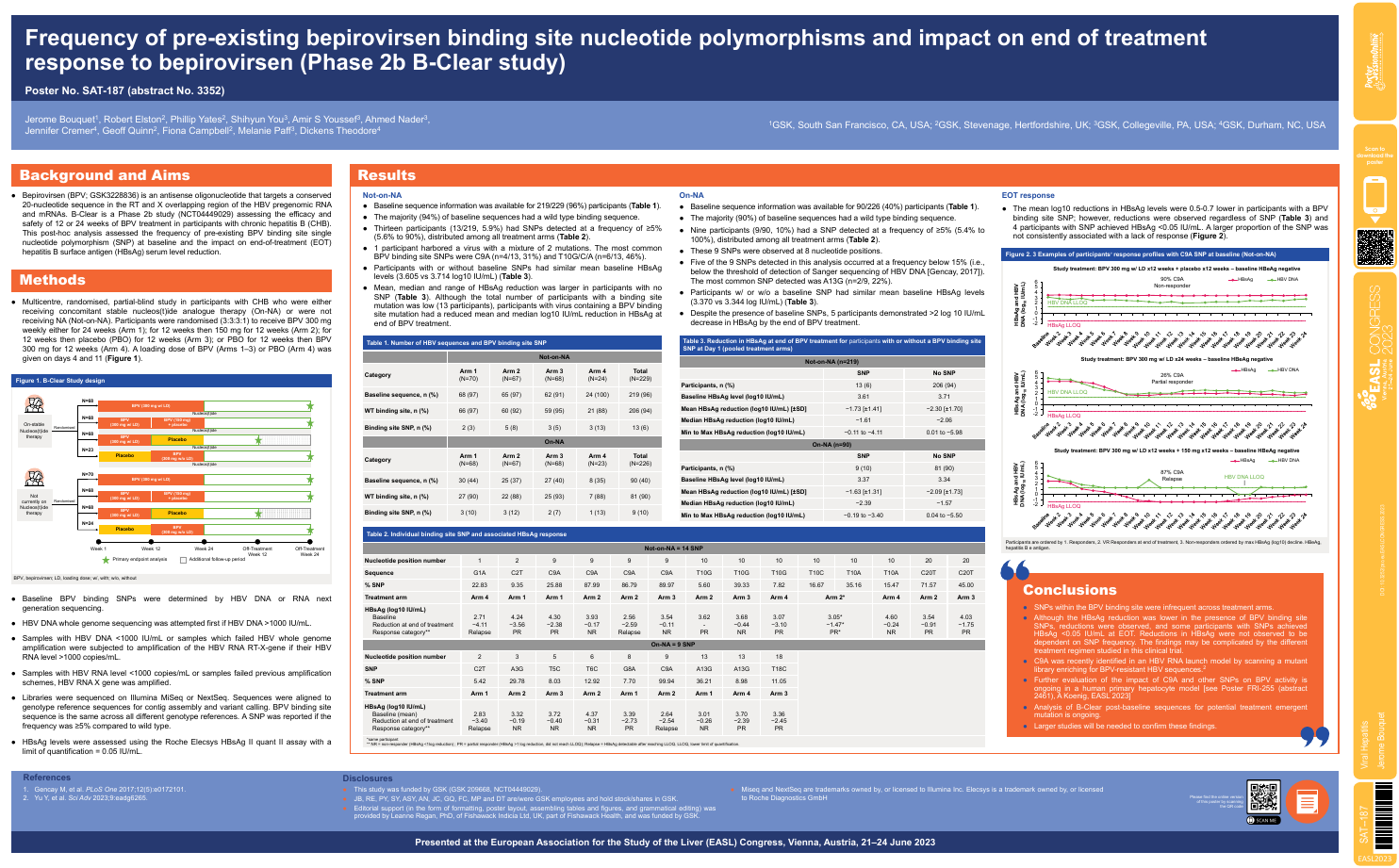
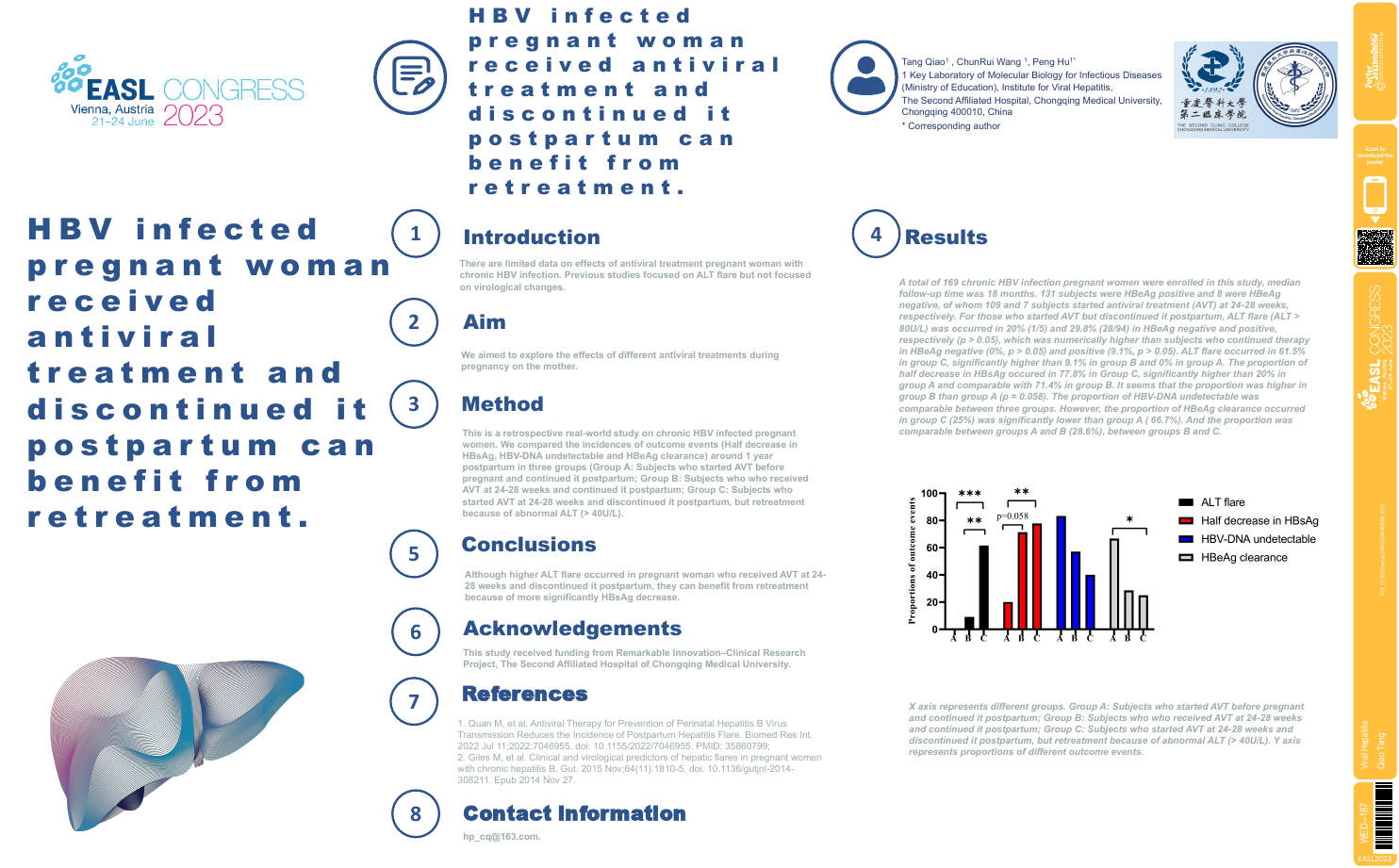
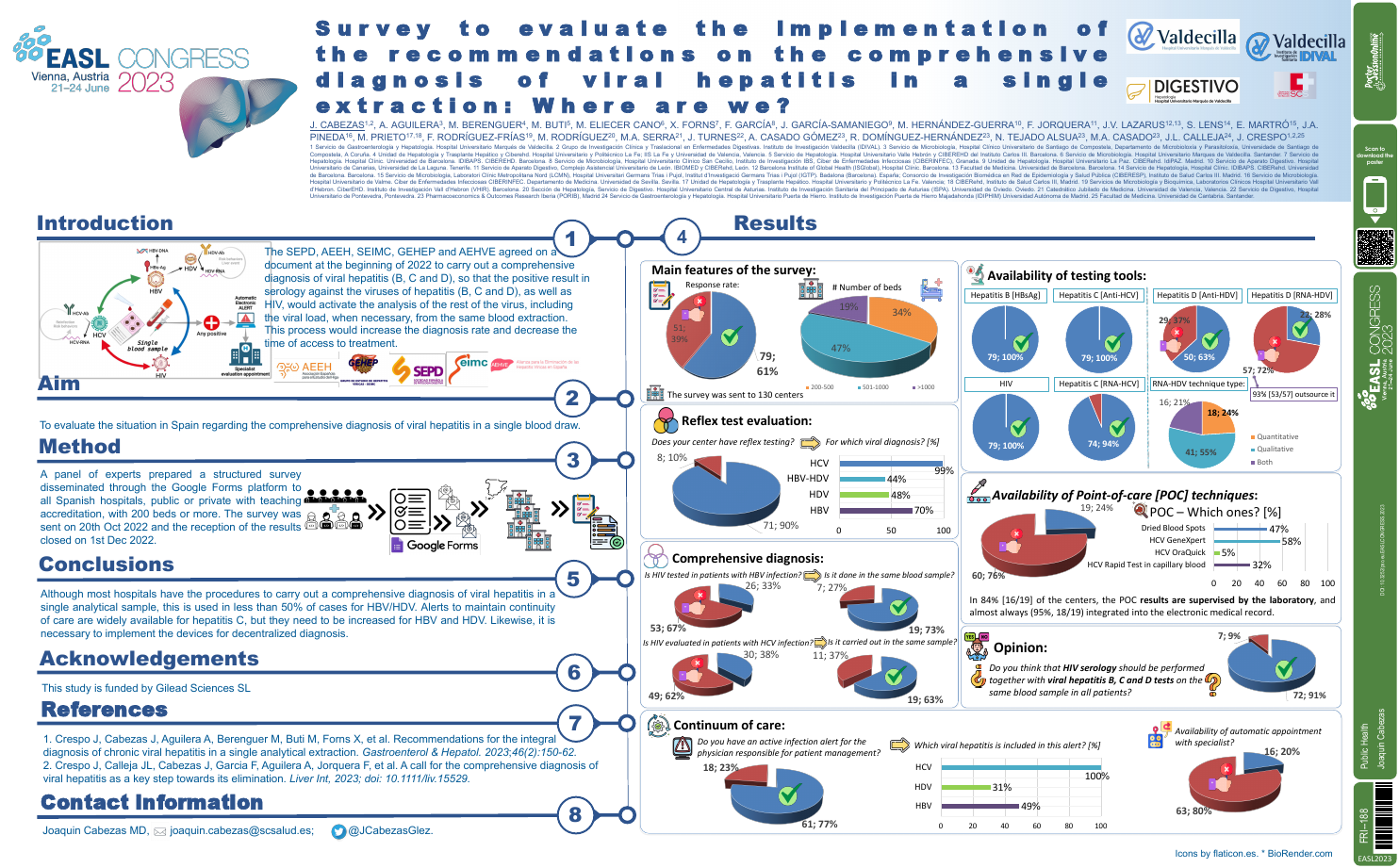
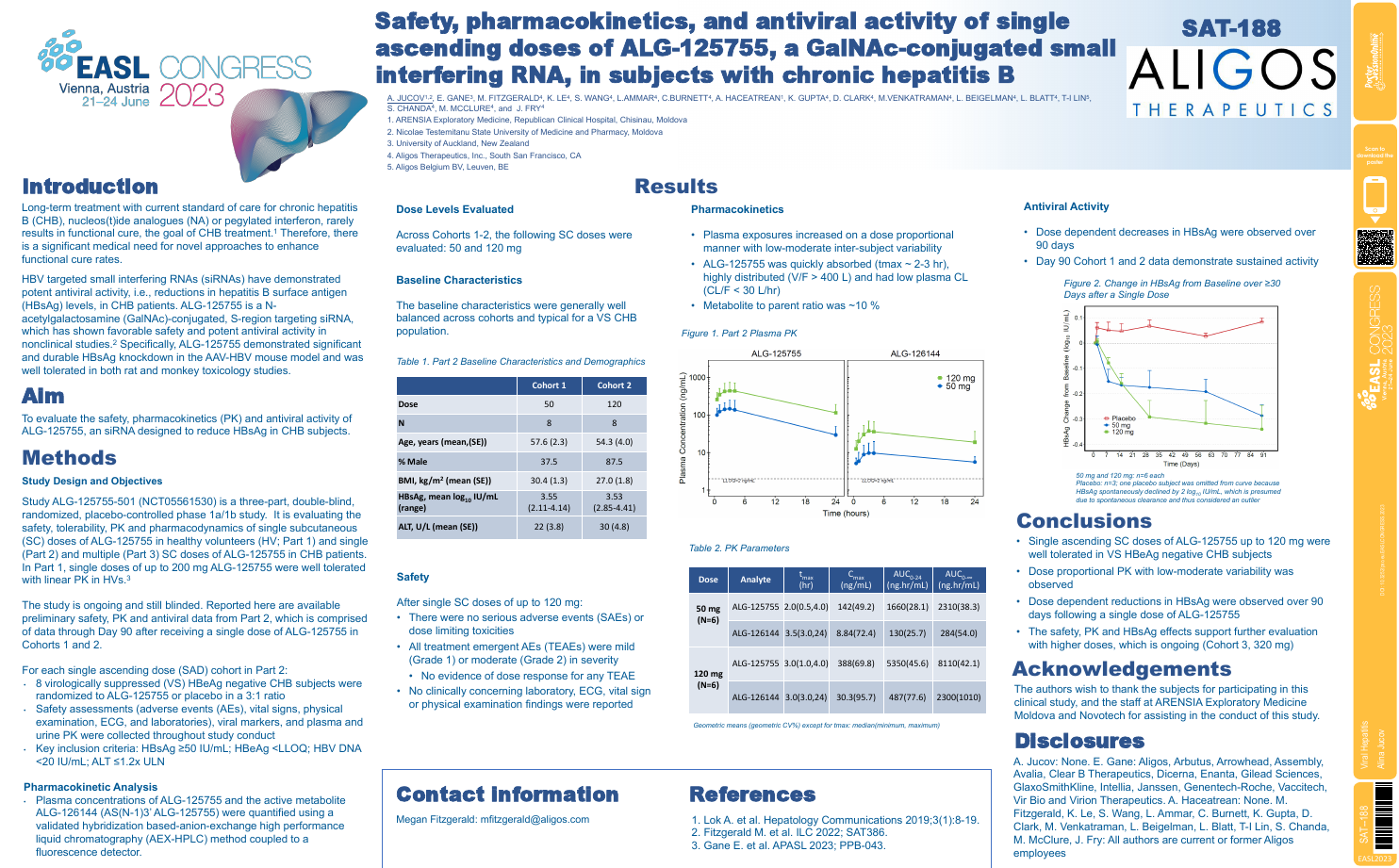
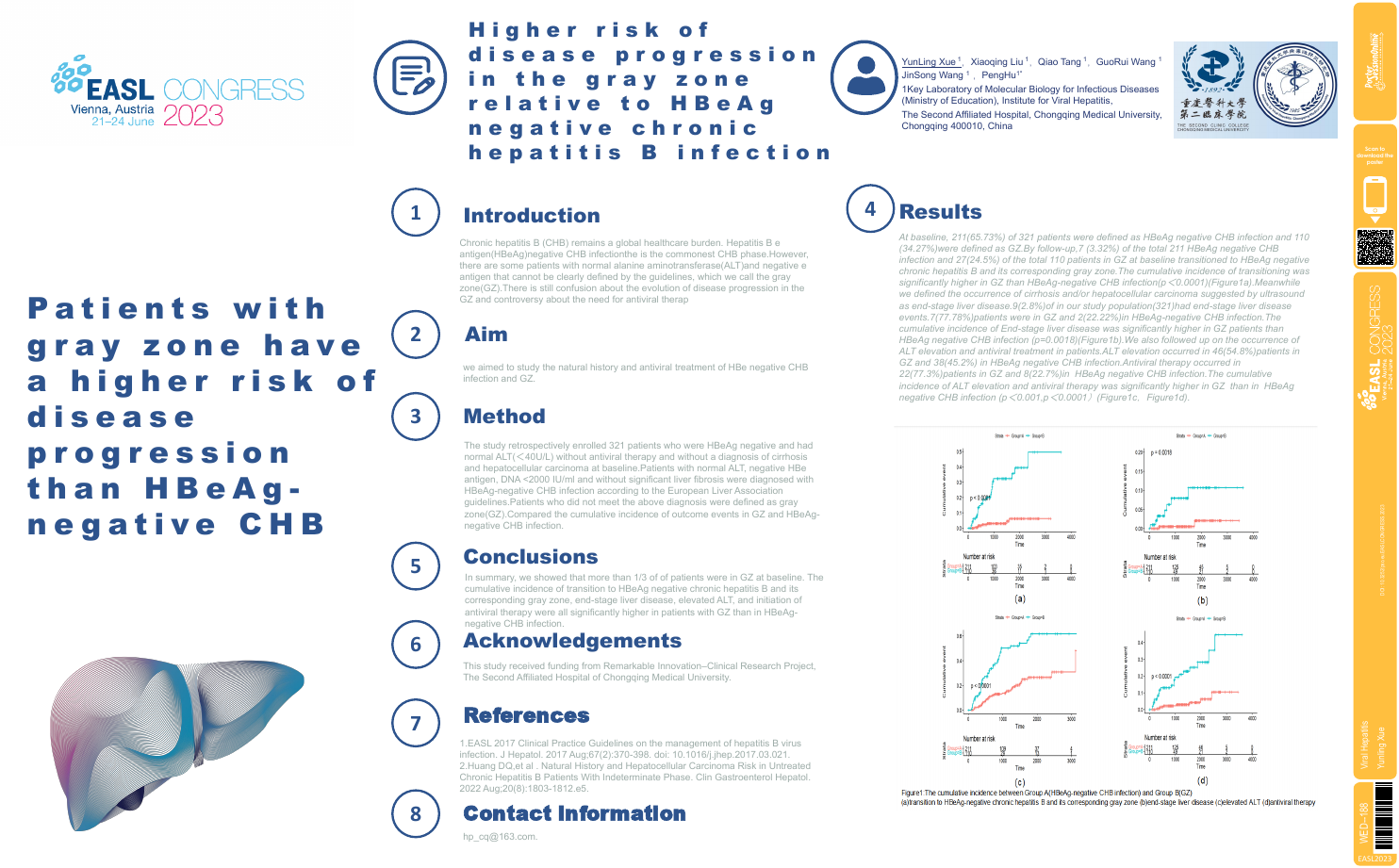
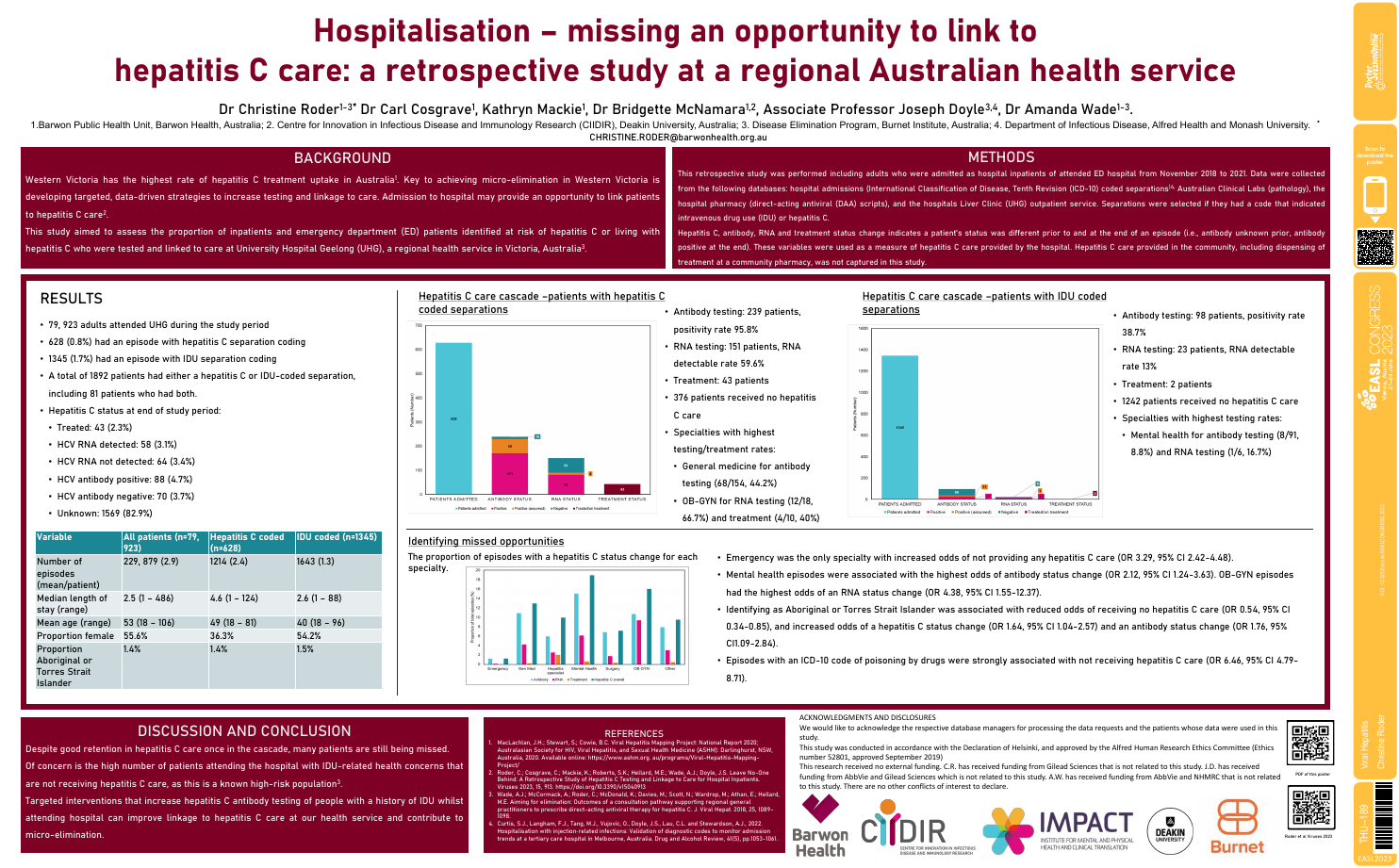
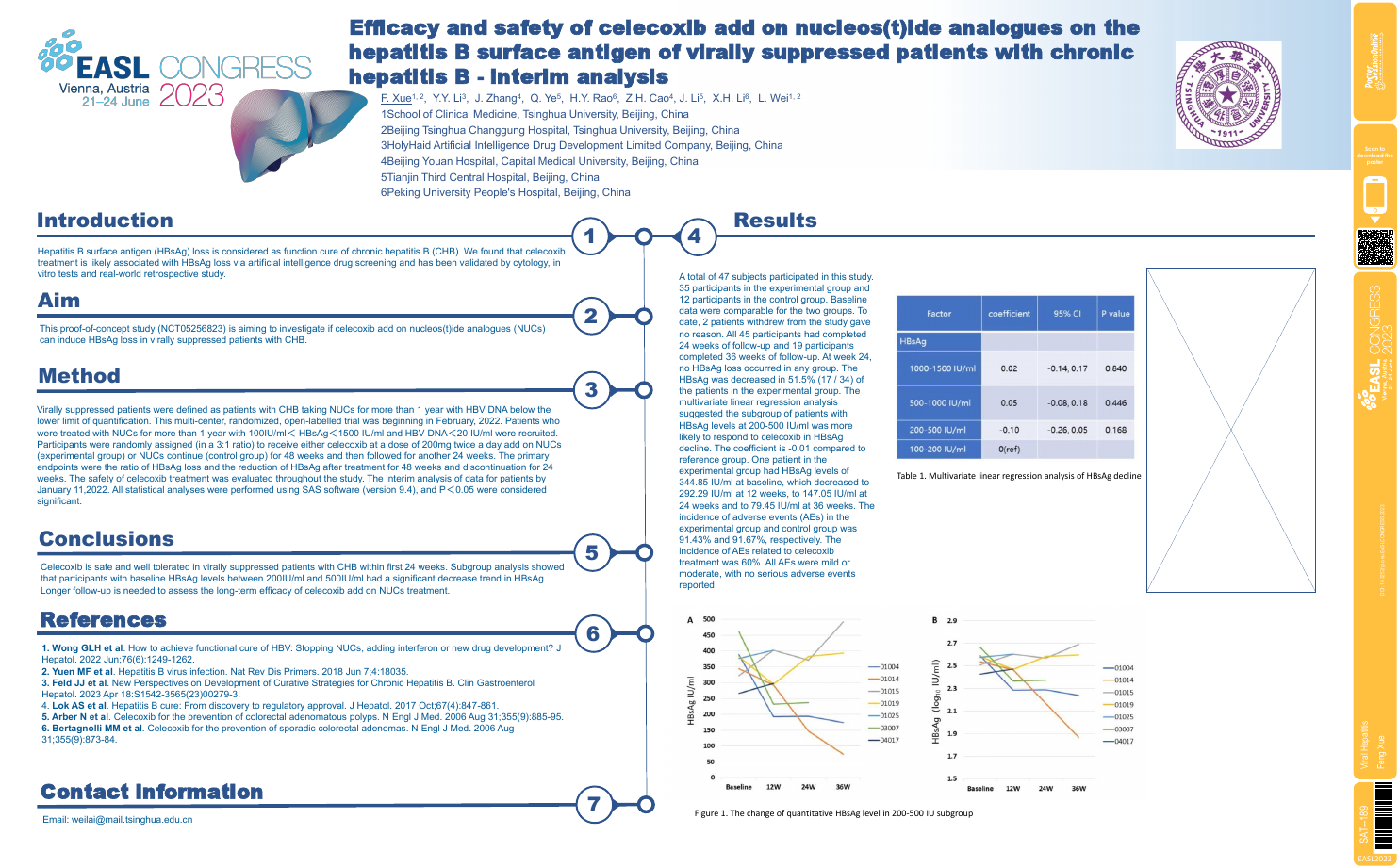
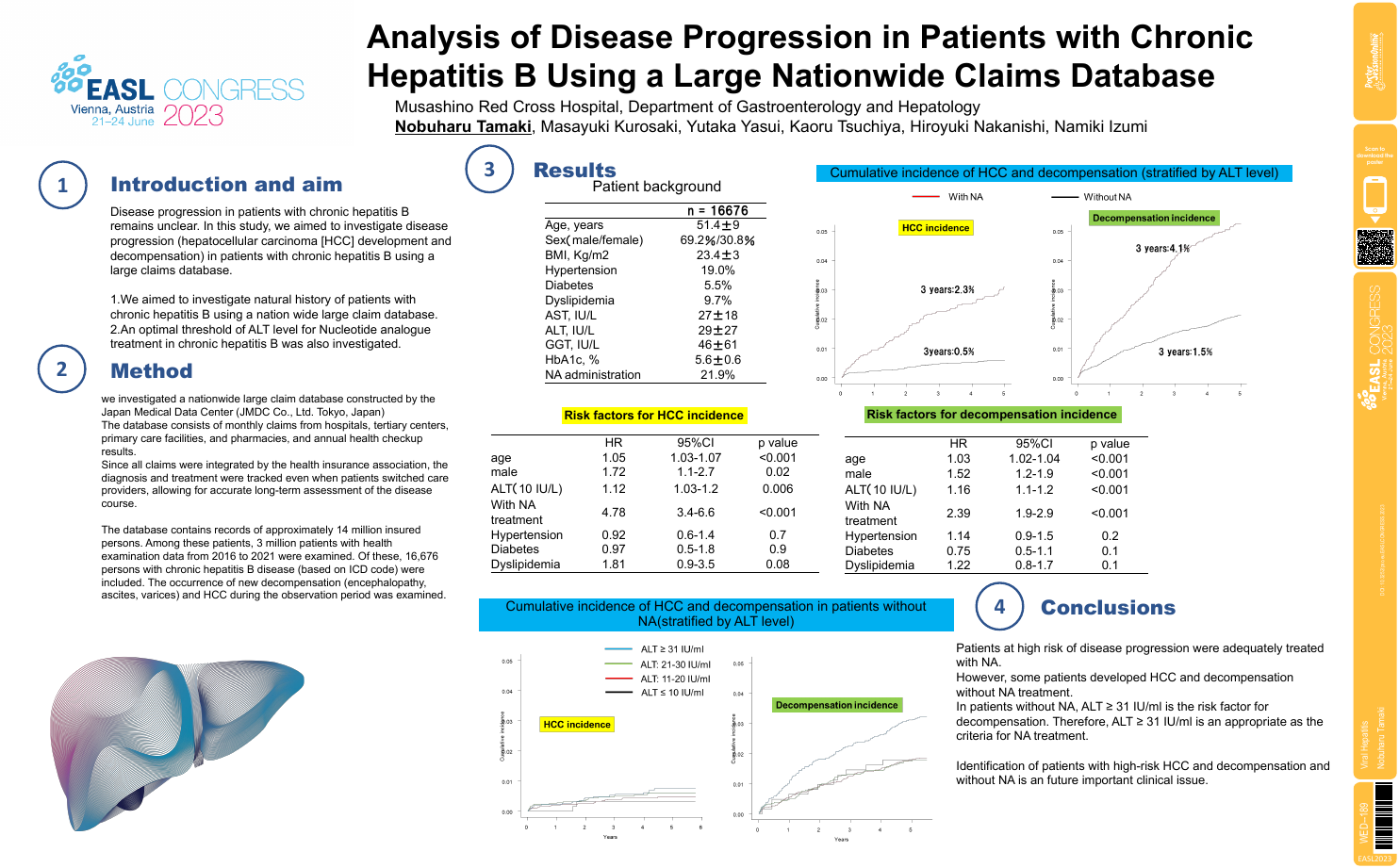
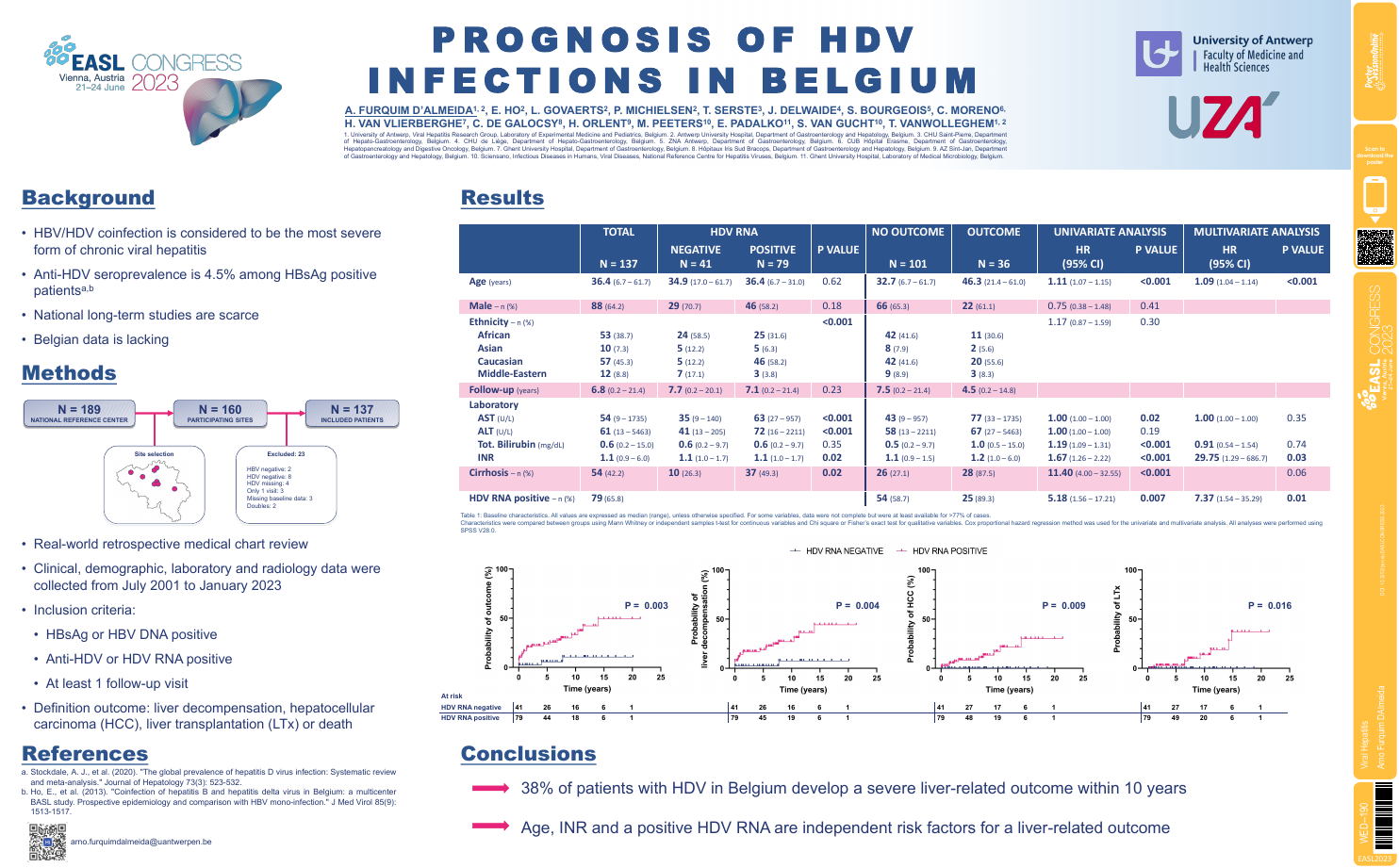
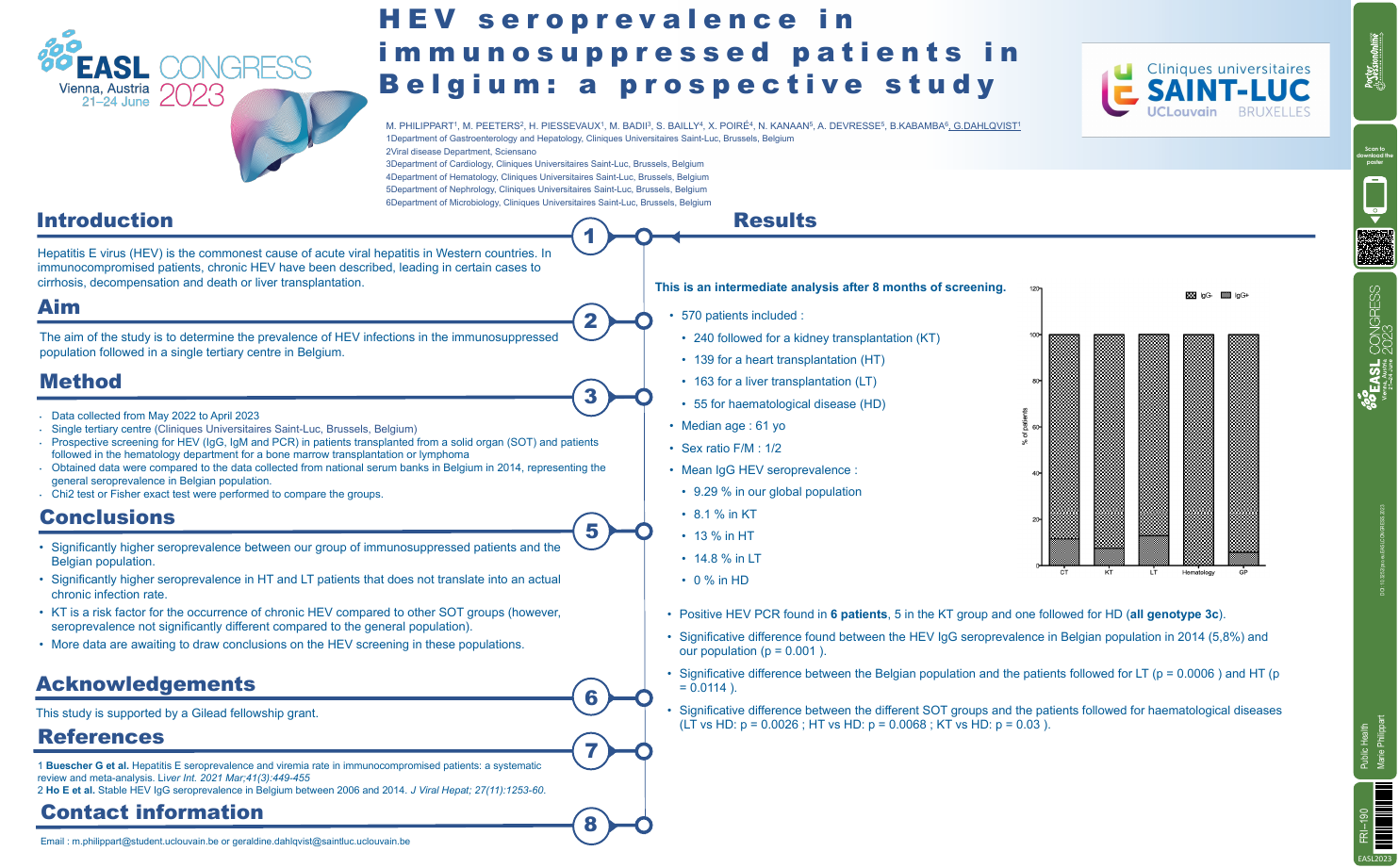
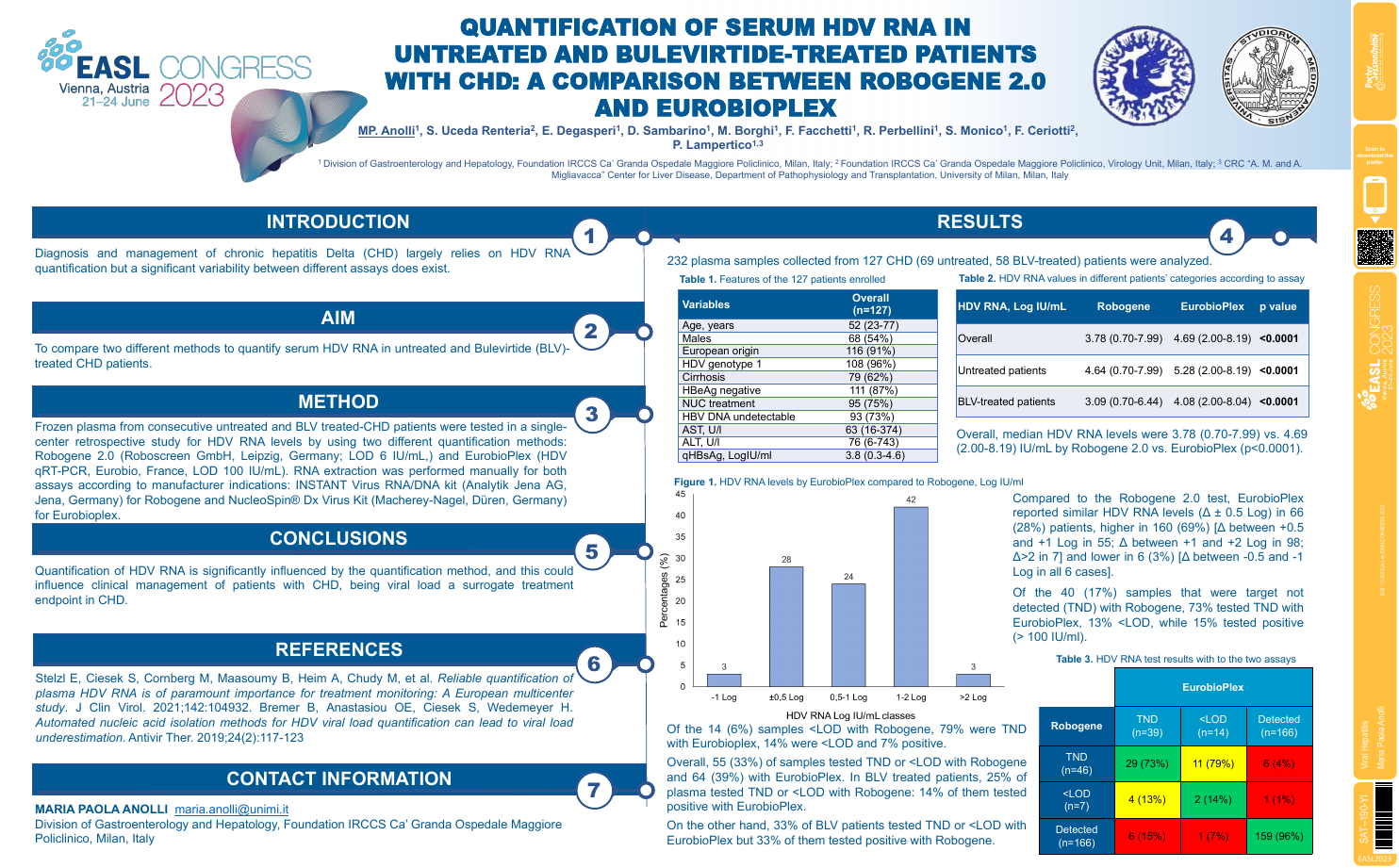
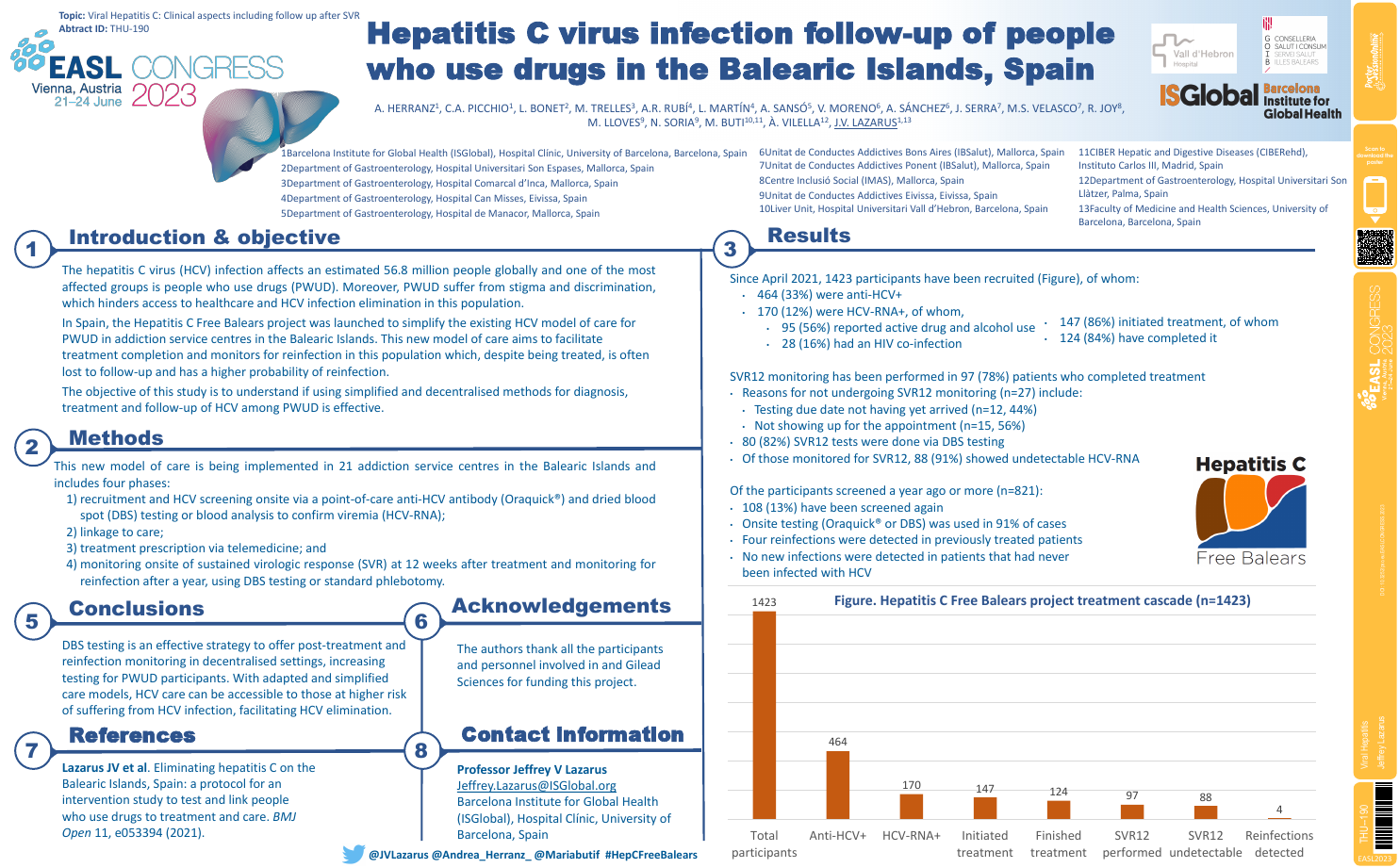
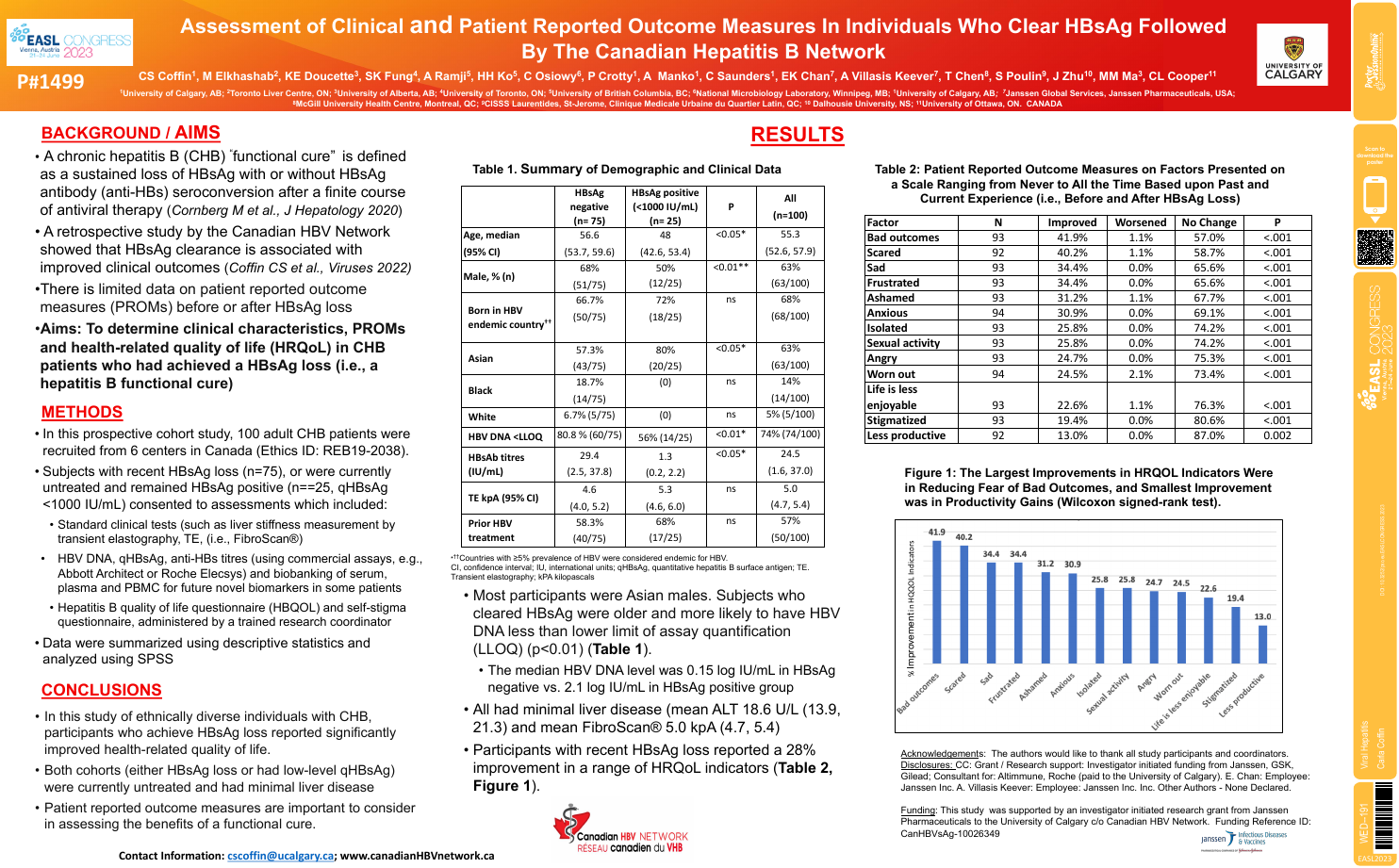
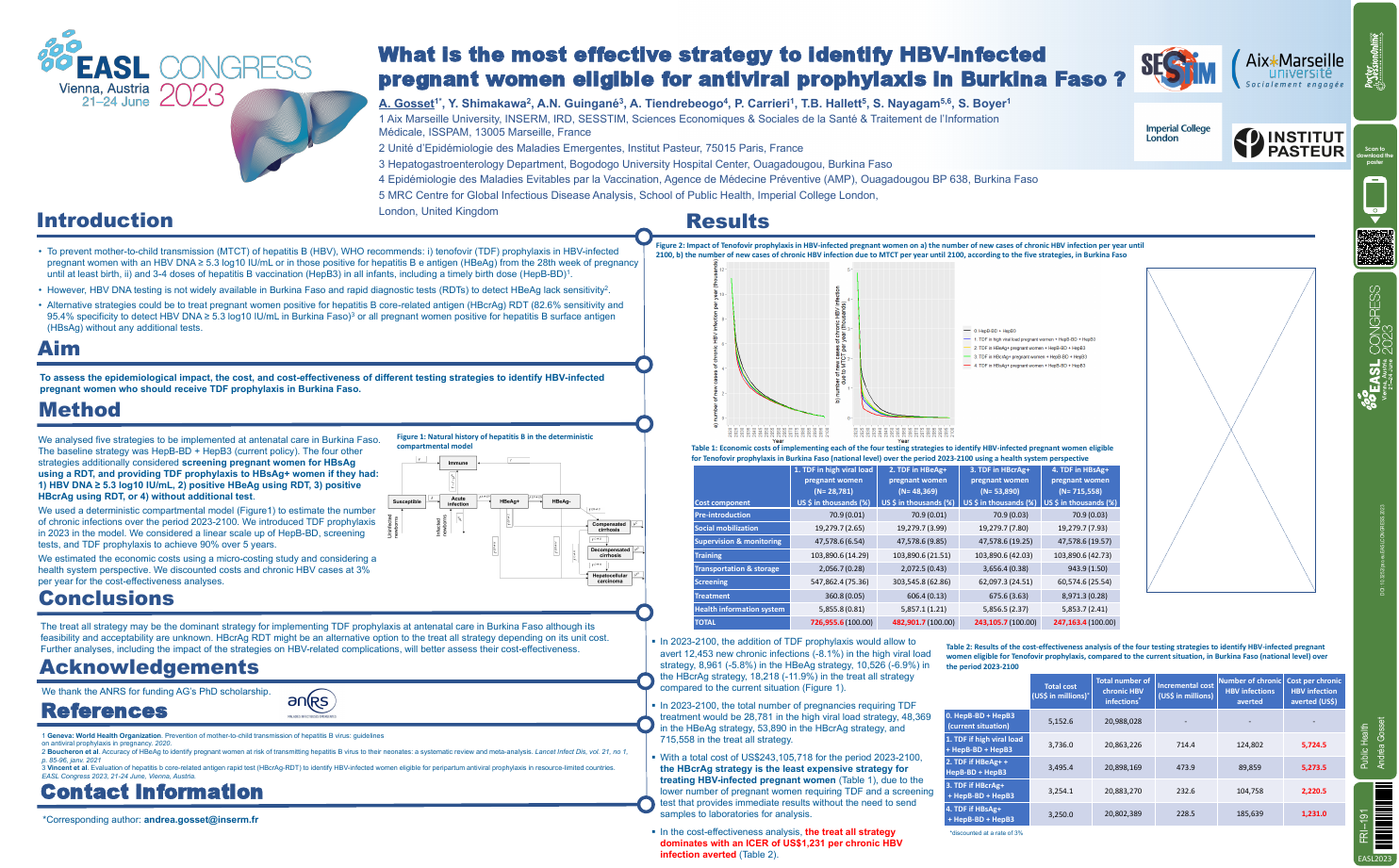
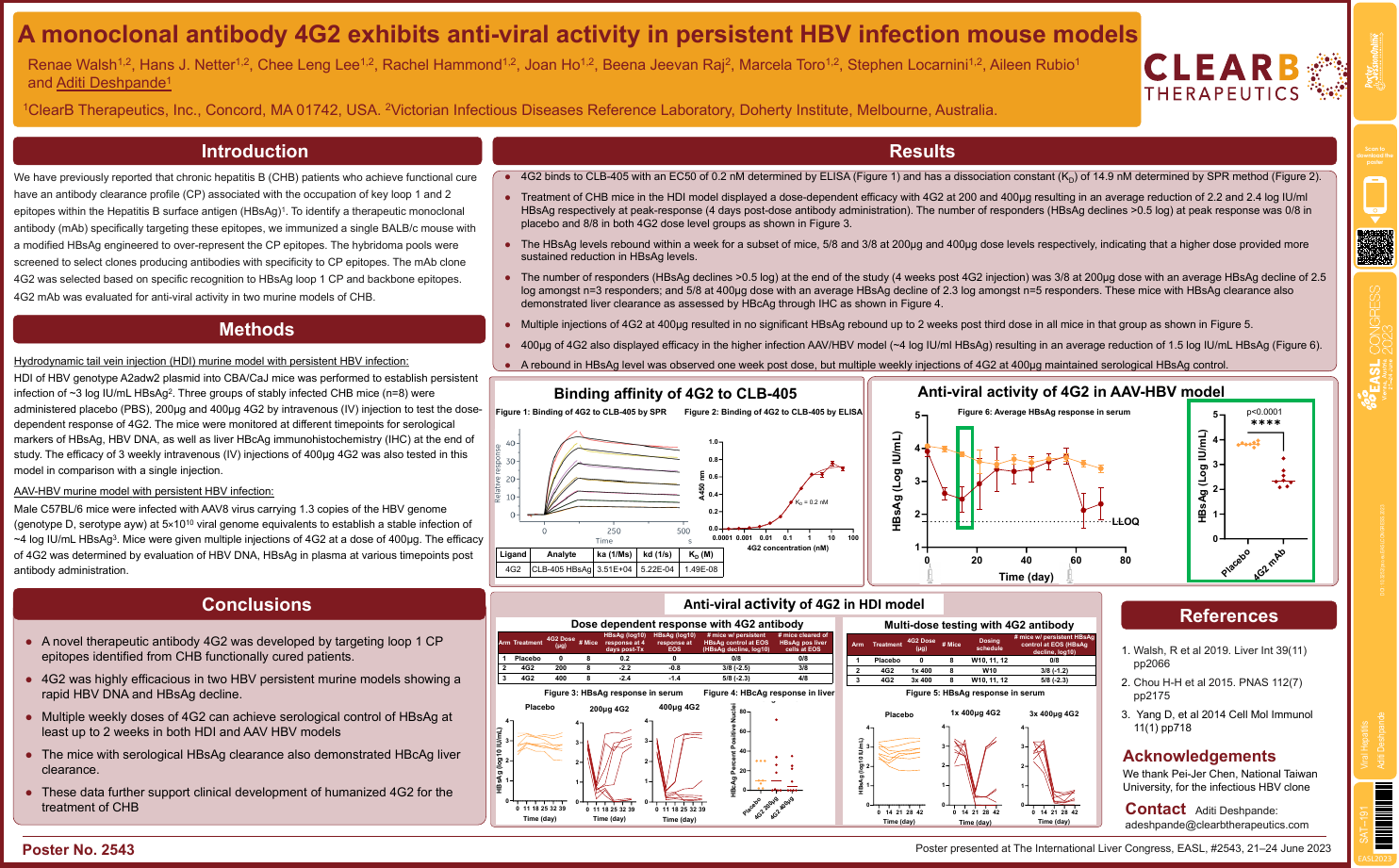
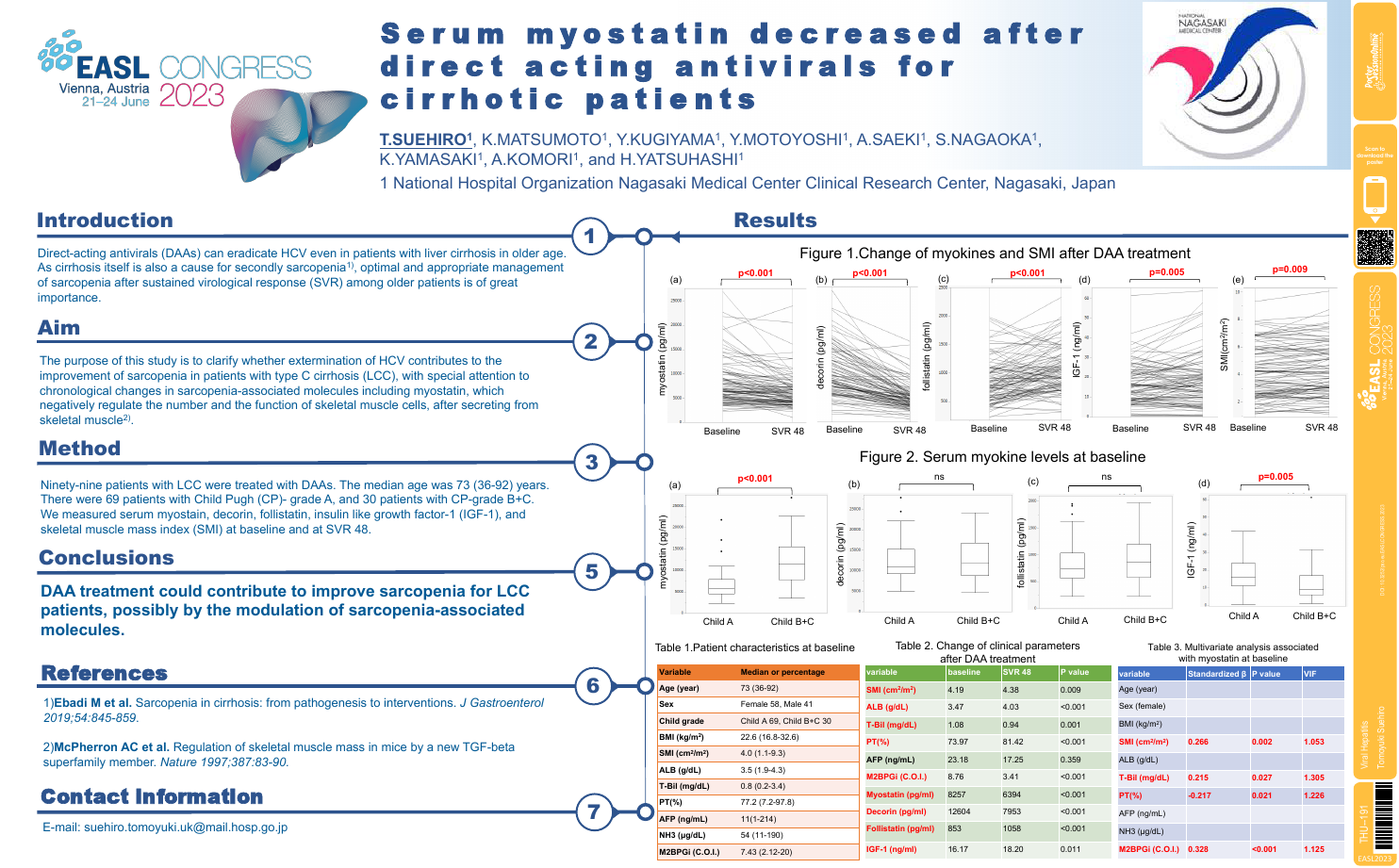
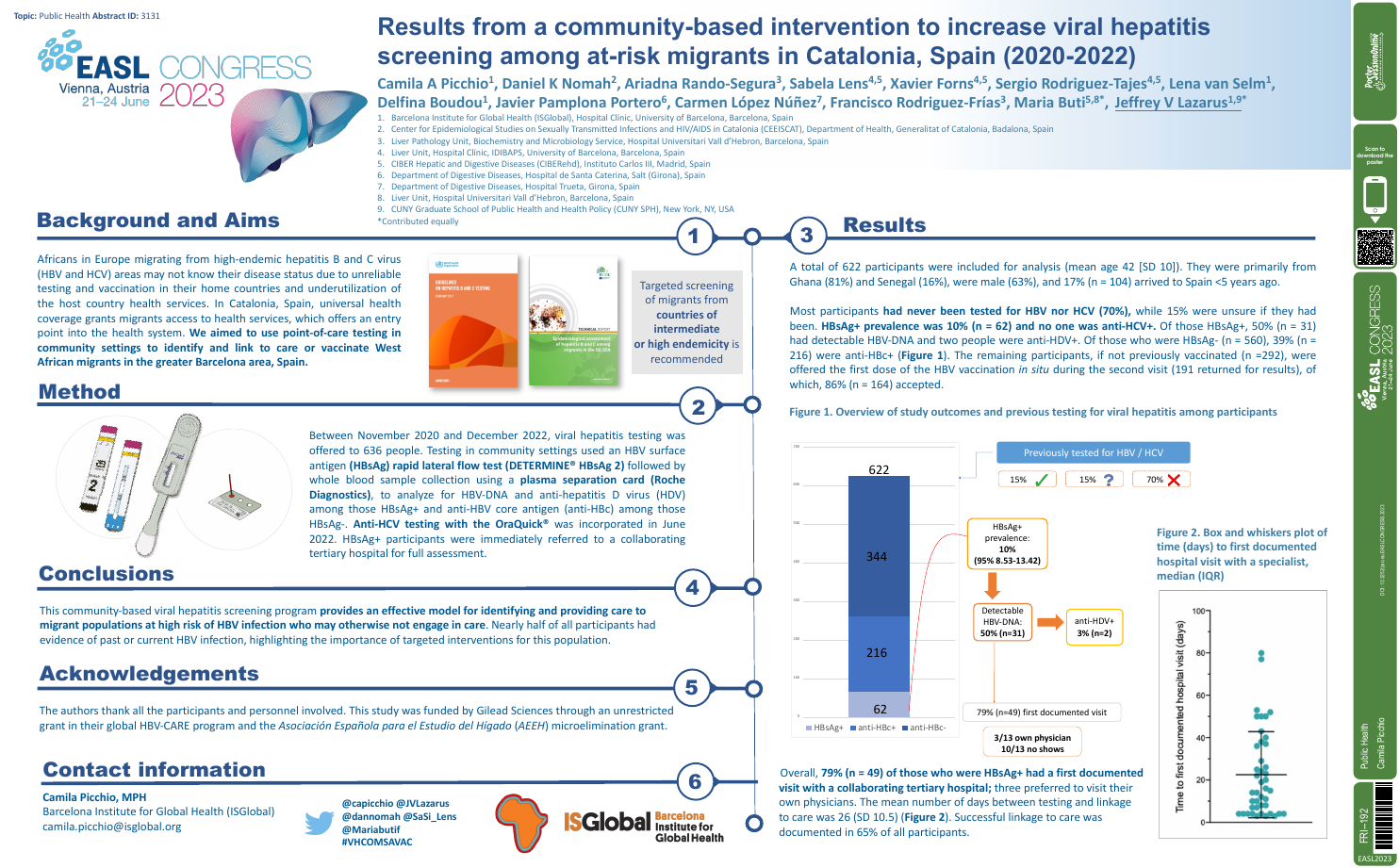
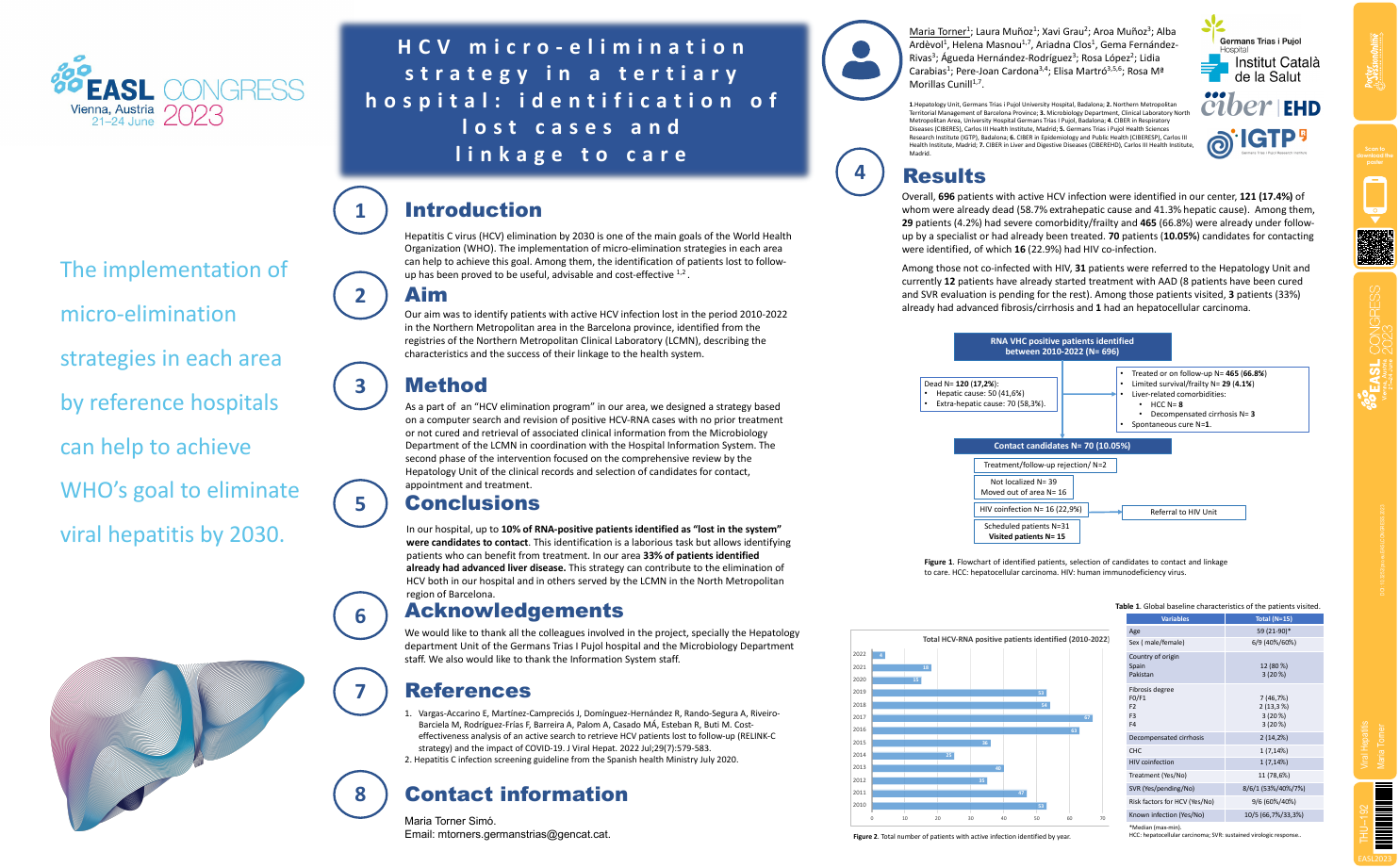
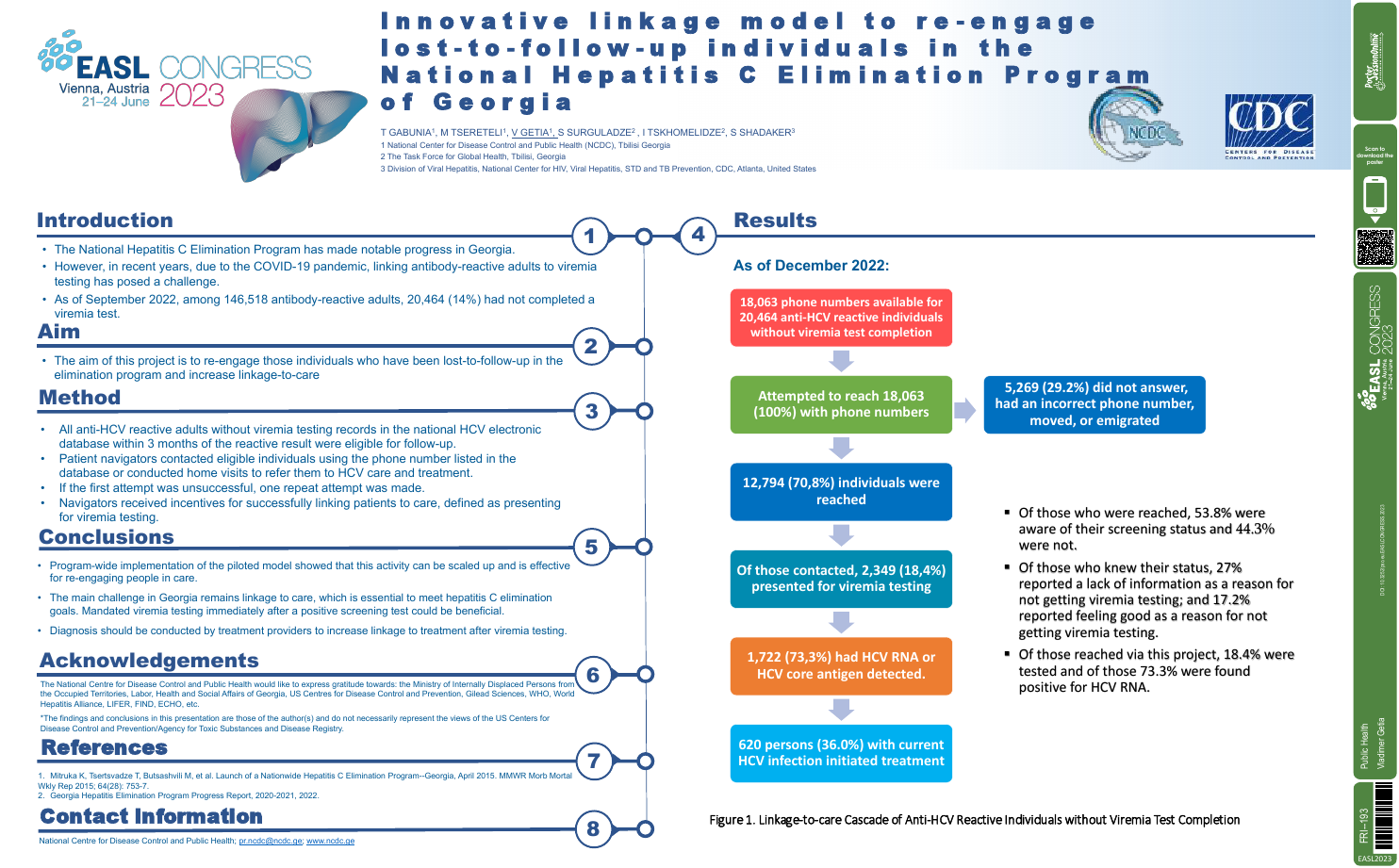
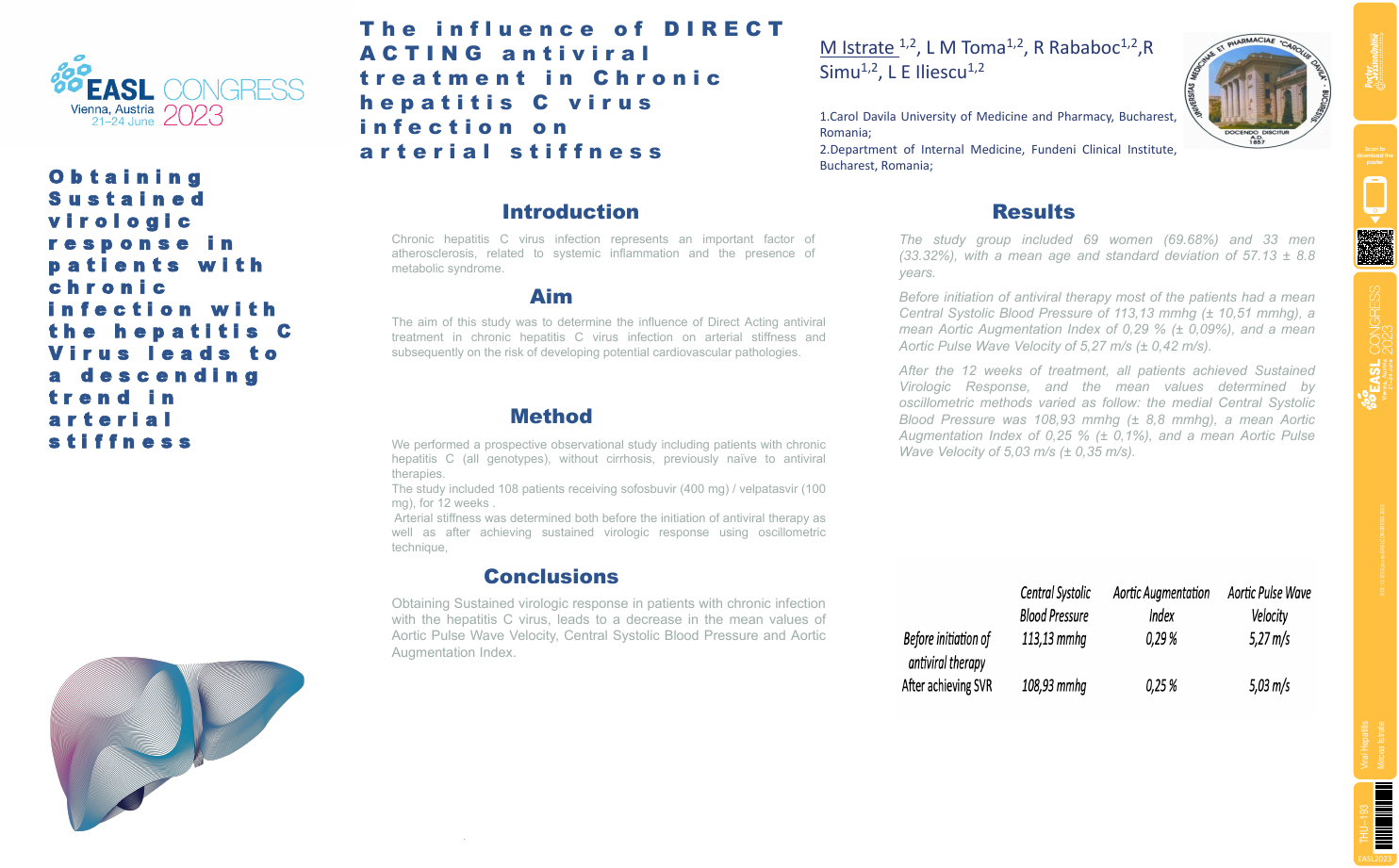
| Frequency of bepirovirsen binding site n.. | Jerome Bouquet .. | Robert Elston, Phillip Yates, .. | Viral Hepatitis.. | - - | |
| HBV infected pregnant woman received ant.. | Qiao Tang .. | .. | Viral Hepatitis.. | - - | |
| Survey to evaluate the implementation of.. | Joaquin Cabezas .. | .. | Public Health.. | - - | |
| Safety, pharmacokinetics, and antiviral .. | Alina Jucov .. | .. | Viral Hepatitis.. | - - | |
| Higher risk of disease progression in th.. | Yunling Xue .. | Xiaoqing Liu &65292;Qiao Tang .. | Viral Hepatitis.. | - - | |
| Hospitalisation - missing an opportunity.. | Christine Roder .. | Dr Carl CosgraveKathryn Mackie.. | Viral Hepatitis.. | - - | |
| Efficacy and safety of celecoxib add on .. | Feng Xue .. | .. | Viral Hepatitis.. | - - | |
| Analysis of disease progression in patie.. | Nobuharu Tamaki .. | .. | Viral Hepatitis.. | - - | |
| Prognosis of HDV infections in Belgium.. | Arno Furquim DAlmeida .. | .. | Viral Hepatitis.. | - - | |
| Hepatitis E virus seroprevalence in immu.. | Marie Philippart .. | M. PEETERS, H. PIESSEVAUX, M. .. | Public Health.. | - - | |
| Quantification of serum HDV RNA in untre.. | Maria Paola Anolli .. | .. | Viral Hepatitis.. | - - | |
| Hepatitis C virus infection follow-up of.. | Jeffrey Lazarus .. | Andrea Herranz, Camila A Picch.. | Viral Hepatitis.. | - - | |
| Assessment of clinical and patient repor.. | Carla Coffin .. | M Elkhashab, KE Doucette, SK F.. | Viral Hepatitis.. | - - | |
| What is the most effective strategy to i.. | Andréa Gosset .. | .. | Public Health.. | - - | |
| A monoclonal antibody 4G2 exhibits anti-.. | Aditi Deshpande .. | Renae Walsh, Hans J. Netter, C.. | Viral Hepatitis.. | - - | |
| Serum myostatin decreased after direct a.. | Tomoyuki Suehiro .. | .. | Viral Hepatitis.. | - - | |
| Results from a community-based intervent.. | Camila Picchio .. | Daniel K Nomah, Ariadna Rando-.. | Public Health.. | - - | |
| HCV micro-elimination strategy in a tert.. | Maria Torner .. | .. | Viral Hepatitis.. | - - | |
| Innovation linkage model to re-engage lo.. | Vladimer Getia .. | .. | Public Health.. | - - | |
| The influence of direct acting antiviral.. | Mircea Istrate .. | Letitia Toma, R&259;zvan Rabab.. | Viral Hepatitis.. | - - | |
Abstract
Thunderstorm-related asthma in patients sensitised to olea europaea pollen: twenty emergency department visits for asthmatic symptoms in one single day Losappio, Laura1; Heffler, Enrico2; Falco, Antonio1; Contento, Francesco1; Cannito, Cosimo1; Rolla, Giovanni2 1"Dimiccoli" Hospital, Emergency Department, Barletta, Italy; 2University of Torino - AO Mauriziano "Umberto I", Allergy and Clinical Immunology, Torino, Italy
Background: Associations between thunderstorm and asthma morbidity have been reported in several countries. Common to all epidemics of thunderstorm-related asthma is a significant increase in atmospheric allergen load during and immediately after a thunderstorm. Sensitization to Alternaria species or to grass and parietaria pollens has been suggested to play a key role in thunderstorm-related asthma. The only reported event of thunderstorm-related asthma in Mediterranean area was attributed to sensitization to parietaria pollen.
Method: here we describe a series of 20 patients who presented to Emergency Department in Barletta (94,000 inhabitants), Puglia (Italy) for sudden and severe asthmatic symptoms between May 27th and 28th 2010 (from15:36 to 5:02), immediately after a violent thunderstorm which occurred following a very hot morning (mean temperature: 29°C). All the patients have been subsequently visited by an allergist and underwent allergological work-up which included skin prick tests and a careful clinical history. Local pollen counts were available.
Result: Between May 10th and June 10th 2010, 86 Emergency Department asthma visits were recorded, 20 of them during the study day. Patients' mean age was 44.25 +/- 18.5 years (range: 9-81), 8/20 females, 2 smokers, 16 with a previous history of known respiratory allergy. Only two patients regularly took anti-asthma drugs. All 20 patients were sensitized to Olea europaea pollen, 7 of whom were monosensitized. Ten patients were sensitized to grass, 7 to parietaria, 5 to compositae, 5 to cypress, 5 to house dust mites, 3 to dog and 1 to cat danders. No patient was sensitized to Alternaria. Mean pollen count was 17 granules/m3 for Olea europaea, 6 granules/m3 for grass pollen.
Conclusion: This is, in our knowledge, the second epidemic of thunderstorm related asthma described in Mediterranean area and the first one in which sensitization to Olea europaea played a key-role. In conclusion, our report indicates that thunderstorm asthma may involve different allergens (not only fungal spores and grass or parietaria pollen) in different geographic areas, depending on the seasonality of thunderstorms and allergenic pollen.